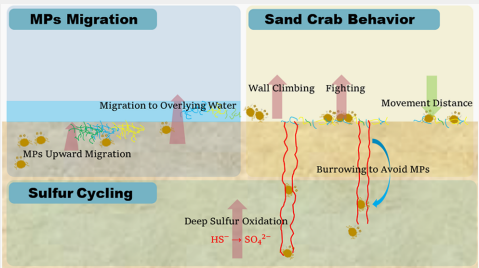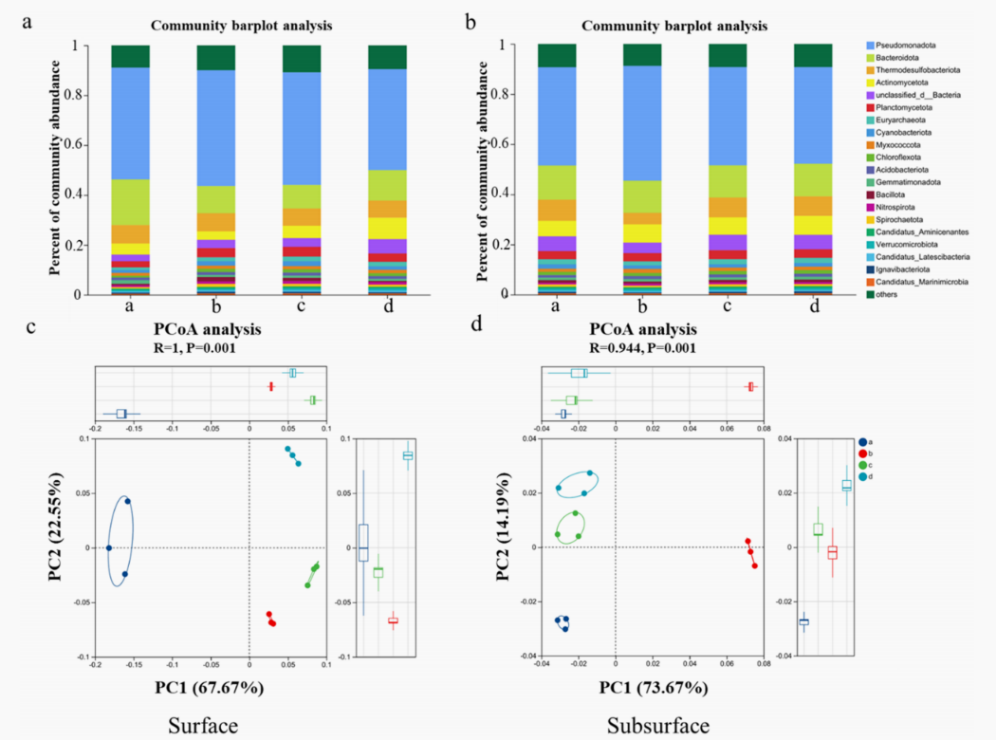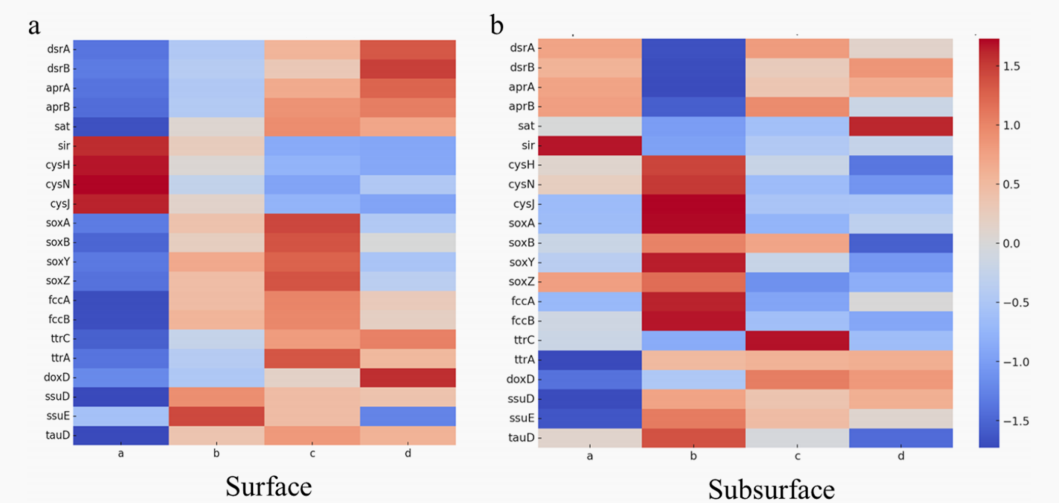| Research |
| Location:Home > Research > Research Progress |
| Yantai Institute of Coastal Zone Research Reveals Microplastic Impacts on Intertidal Animal Behavior and Sulfur Cycling in Sediments |
With the escalating global plastic pollution crisis, the accumulation of microplastics (MPs) in estuarine environments and their ecological consequences have attracted increasing attention. Estuarine sediments act not only as major sinks for MPs but also as dynamic sites for biogeochemical cycling, making them particularly sensitive to external disturbances. Bioturbation by benthic fauna can profoundly alter sediment structure and influence material cycling processes. However, limited research has addressed how MPs modulate the behavior of benthic organisms and thereby affect sedimentary biogeochemical cycles. Recently, a research team from the Yantai Institute of Coastal Zone Research conducted a systematic simulation experiment using the sand crab Scopimera globosa to explore the coupled mechanisms between MPs pollution, animal behavior, and sulfur cycling in sediments. By integrating laboratory mesocosm experiments with AI-based behavioral tracking and metagenomic sequencing, this study investigated the impact of MPs pollution on sand crab behavior, the vertical redistribution of MPs in sediments, and the regulation of sulfur cycling processes. The results demonstrated that bioturbation by S. globosa significantly enhanced the upward migration of MPs, leading to a 27-fold increase in MPs abundance in surface sediments and overlying water compared to undisturbed conditions. This indicates that sand crabs are a critical driver of MPs re-exposure risk in intertidal zones. Under MPs exposure, the crabs exhibited notable behavioral abnormalities, including reduced locomotion, prolonged reburial time, increased aggressive interactions, and frequent wall-climbing behavior, indicating heightened environmental stress. The crabs actively avoided regions with high MPs concentrations and migrated toward deeper sediment layers. This vertical migration further altered sediment redox conditions and reshaped microbial community distribution patterns. Bioturbation by the sand crabs significantly modified microbial community composition and sulfur metabolism in the sediments. In surface sediments, the abundance of aerobic bacteria (e.g., Pseudomonadota) increased markedly, while that of anaerobic sulfate-reducing bacteria (e.g., Thermodesulfobacteriota) decreased. In deeper layers, bioturbation promoted the expression of sulfur oxidation genes (soxA, soxB), while suppressing the expression of sulfate reduction genes (dsrA, dsrB). This study reveals a novel mechanism by which MPs indirectly influence sediment biogeochemical processes through the modulation of benthic animal behavior. These findings provide new insights into the ecological risks of MPs pollution in coastal environments. The research has been published in the international journal Environmental Science & Technology. The first author is Dr. Chaofan Sun, and the corresponding author is Prof. Qing Wang. This work was supported by the National Natural Science Foundation of China and the research consortium projects of the Yantai Institute of Coastal Zone Research, Chinese Academy of Sciences.
Figure 1 Schematic diagram of research conclusion
Figure 2 Analysis of microbial community diversity in sediments
Figure 3 Expression of sulfur metabolism related genes in sediments from different treatment groups Paper Information Sun, C., Liu, H., Teng, J., Feng, W., Wang, D., Wang, X., ... & Wang, Q. (2025). Impact of Microplastic Exposure on Sand Crab Scopimera globosa Behavior: Implications for Microplastic Transport and Sulfur Cycling through Bioturbation. Environmental Science & Technology, 2025, 59, 7039−7053. https://pubs.acs.org/doi/full/10.1021/acs.est.5c01192 |
| Appendix Download |
|
|


